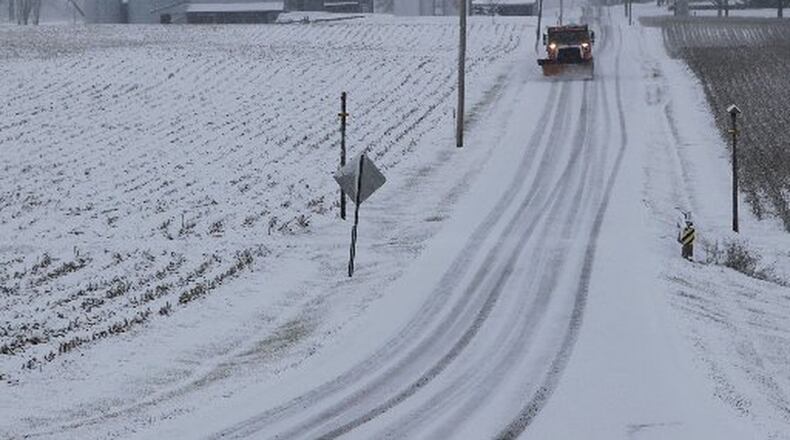The National Oceanic and Atmospheric Administration (NOAA) put together a map to show the historical probability of at least 1 inch of snow on the ground Christmas morning in the Lower 48 states. The data used to create this map was based on the latest U.S. Climate Normals from NOAA’s National Centers for Environmental Information. What it shows — and it’s no surprise based on location — is most of Idaho, Minnesota, Maine, Upstate New York, the Allegheny Mountains of Pennsylvania and West Virginia, the Rockies and the Sierra Nevada Mountains all have a high probability of seeing a White Christmas.
In southwest Ohio, Dayton and Cincinnati statistically only experience a White Christmas about 20 to 30 percent of the time. Of these cities, Dayton tends to see the them more frequently.
The most recent White Christmas for both cities occurred in 2017. While the snow depth wasn’t that high, it was enough to be considered a White Christmas. As for the record highest snow depth on Christmas day, this occurred in 2004. Cincinnati had a snow depth of 9 inches and Dayton of 16 inches.
As for having a White Christmas this year, that’s where it gets tricky. Christmas is a week away, and it can be difficult to forecast that far out, let alone predict at least one inch of snow on the ground by Christmas.
First let’s start with the probability of precipitation. As I’m writing this article, there appears to be something brewing around the holiday. One model brings the chance for precipitation by Christmas Eve, while the other waits until late Christmas day. If these stand the test of time, there’s at least a small chance that something will fall from the sky during this time frame.
As for the temperatures, that might be the more difficult part of the story.
You may have noticed our temperatures have been slightly above normal the past few days. This has a lot to do with the Arctic Oscillation. Since early December, the AO has transitioned into a positive phase. What that means is the stratospheric winds around the polar region have increased, keeping arctic cold air locked to our north.
Looking ahead, long range predictions show some colder air may spill south as the AO shift back negative. Whether or not this happens by Christmas day is still to be determined. While temperature trends do show a drop by Christmas morning, I’m not sure it will be enough to create snow.
The last component to having a White Christmas would be how warm is the ground. Due to the recent warm-up, the surface temperature has come up slightly, too. This would impede the amount of snow that could accumulate.
Taking all of the forecast and historical data into consideration, I would have to say our chances of a White Christmas are very low this year. That being said, we’re still a week away and a lot can change before then.
Happy Holidays!
About the Author
